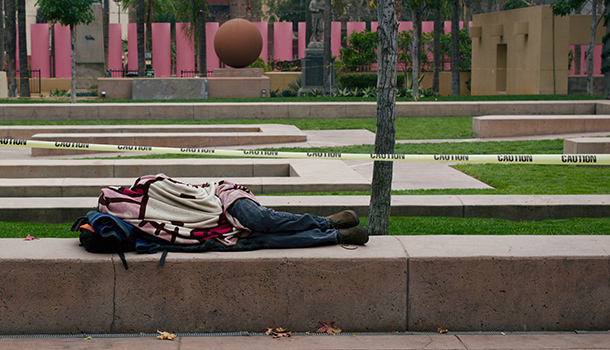
(Photo: Levi Clancy/Wikimedia)
Los Angeles County has been able to provide services and prevention efforts to more than 150,000 residents who have serious mental health needs or are at risk using funds from California’s special tax for mental health services. Providing those services lowered homelessness, the need for psychiatric hospitalizations and involvement with the criminal justice system, according to a new RAND Corporation study.
“Evaluation of the Mental Health Services Act in Los Angeles County: Implementation and Outcomes for Key Programs” found that the Los Angeles County Department of Mental Health provided prevention and early intervention services to nearly 130,000 youth and clinical and social services to almost 25,000 and adults from 2012 to 2016.
“We found evidence that the services created in Los Angeles County under the Mental Health Services Act are reaching the people they intend to help, and those people are benefitting from the services provided,” said Scott Ashwood, lead author of the report and a policy researcher at RAND.
The funding comes from Proposition 63, the Mental Health Services Act (MHSA), which was passed by California voters in 2004 and created a special tax on all personal income more than $1 million to provide expanded mental health services across the state. The Mental Health Services Oversight and Accountability Commission (MHSOAC) oversees the implementation of MHSA.
Los Angeles County used MHSA funds to expand Full Service Partnership (FSP) services, which are intensive programs that provide mental health and support services, and offer new prevention and early intervention (PEI) services. Researchers studied the reach and impact of these activities with a focus on PEI programs for children and transition-age youth (TAY) and FSP programs for children, TAY and adults.
Some key findings include:
- The vast numbers of youth served through PEI programs were members of ethnic minorities and 65 percent were new clients.
- FSP programs provide services to vulnerable and diverse populations and the individuals served by the programs tend to have severe diagnoses and relatively high rates of homelessness.
- FSP clients experienced decreased rates of homelessness and justice system detention, as well as decreased utilization of inpatient hospitalization for mental health. Adults had increased rates of having a primary care provider, suggesting a better connection to physical health care.
The study also found that there was a significant decline in the percentage of TAY clients detained by the justice system, including jail, prison or juvenile detention. In the year before enrollment in an FSP, 10.5 percent of TAY clients were detained compared to 7 percent in the year following enrollment. For adults, in the year prior to enrollment in an FSP, 17 percent of adult clients had at least one stay in jail or prison and, in the year following enrollment, 8.5 percent were detained.
MHSOAC released a report earlier this year focusing on the intersection on people with mental health needs in the criminal justice system.
The RAND study also found the rate of homelessness dropped among program participants. They also experienced less inpatient hospital stays for mental health needs. The employment rate increased among those receiving services, even though the overall jobless rate among this population remained high.
Researchers recommend that the county’s Department of Mental Health continue its efforts to reach vulnerable populations and improve outcomes for diverse racial/ethnic groups, improve data collection methods to better measure participants’ life quality improvement and track cost-effectiveness and cost-benefit analysis.

